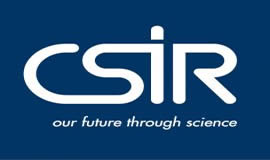
Finger pricking to determine glucose levels in diabetic patients may be a thing of the past if a new research by the Council for Scientific and Industrial Research becomes successful.
Currently, diabetics and healthcare practitioners make use of a device known as a blood glucose meter or glucometer, to determine glucose levels in a patient's blood.
Patients diagnosed with diabetes, suffer from either abnormally high or low levels of glucose, commonly referred to as “sugar”, in the blood.
As diabetes is a chronic condition, diabetics constantly need to monitor their glucose levels.
With a quick needle prick on the fingertip and a test strip, one is able to draw blood that is transferred to the glucometer for analysis.
Although glucometers are effective, they can be painful, and with the need to monitor glucose levels around the clock, diabetics are often left with bulging fingers making them vulnerable to infections.
Cost is also a downside for most, as glucometers are pricey. A glucometer device, averages from anything between R300 to R500.
While the glucometer is a once-off purchase, it comes with an additional cost of test strips that need to be replaced. A box of test strips, needed for the glucometer analysis, go for R200 a pop. However, patients often need two boxes per month bringing the total cost to R400 a month and R4800 per year.
But 27 year-old female researcher at the Council for Scientific and Industrial Research (CSIR), Valentine Sassa, who is a PhD candidate, wants to reduce the added cost- burden of diabetes.
Saasa’s research is based on developing and testing nano material for potential use in monitoring diabetes.
Using nanotechnology to produce a diabetes-detecting chip, Saasa hopes to reduce the cost of glucose monitoring which is a burden for many diabetics.
With just a blow into the device, which mimics a breathalyser, diabetics will able to monitor their sugar levels.
“Nanotechnology or nano-material is technology that you cannot see with your naked eye. You need instruments like your microscope in order to view them. So this technology works in that, when you blow your breath, the molecule inside your breath interacts with these materials and produce a signal. The signal will then tell us about a person’s glucose,” says Saasa.
This signal, explains Saasa, relies on the presence of acetone in a person’s breath that will spur a change in the lives of diabetics around the country and possibly around the world.
“When you are diabetic, your insulin, which is required for your brain to function, is not working at all. What happens then, is that your body will try compensate for the lack of insulin by breaking down fatty acid.
“The fatty acid then releases ketone bodies, one such ketone body is acetone. The acetone then travels into our breath while part of it travels into the bloodstream. The importance of this, is that it gives us a correlation between high blood glucose and high acetone level,” says Saasa.
Through this ground breaking research, the efficiency of healthcare at clinics, hospitals and other health facilities is set to improve.
In addition to efficiency, diabetics can bid goodbye to the pain associated with the current finger-prick method of detection, and say hello to money in their pockets.
While the price of the device is yet to be determined, it is expected to be the most cost effective.
“With this device, a patient will only need to buy it once off and use it for at least five years,” says Saasa.
As the device is earmarked to be pocket-size, it allows diabetics who need to constantly monitor their sugar levels, convenience of access.
The Minister of Health has appointed the board members of the newly established South African Health Products Regulatory Authority (SAHPRA). This health agency is the successor to the Medicines Control Council (MCC) which for decades has been the only medicines regulator in South Africa.
With the research in its final stages, consumers can expect the device to hit the shelves soon.
“We are in the final phases and are currently busy with clinical trials that still need to be approved by the Medicines Control Council (MCC),” says Saasa.
Once the clinical trials are completed and the research has reached its final phase, it will then head to the South African Health Products Regularity Authority (SAHPRA) for approval.
SAHPRA, which replaced the MCC, is the regulatory authority, tasked with monitoring, registration and control of medicines and medical devices.
If given the green light by SAHPRA, pharmaceutical companies can buy the device from the CSIR.
Consumers can then buy the portable device from retail stores to use in the comfort of their homes.-SAnews.gov.za


